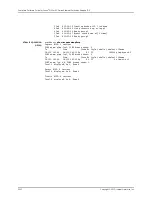
Table 473: show rsvp neighbor Output Fields
(continued)
Level of Output
Field Description
Field Name
detail
Measure of processing overhead requests of refresh messages. Refresh reduction
extensions improve routing device performance by reducing the process
overhead, thus increasing the number of LSPs a routing device can support.
Refresh reduction
can have the following values:
•
operational
—All four RSVP refresh reduction extensions—message ack,
bundling, summary refresh, and staged refresh timer—are functional between
the two neighboring routing devices. For a detailed explanation of these
extensions, see RFC 2961.
•
incomplete
—Some RSVP refresh reduction extensions are functional between
the two neighboring routing devices.
•
no operational
—Either the refresh reduction feature has been turned off, or
the remote routing device cannot support the refresh reduction extensions.
Refresh reduction
detail
Neighboring routing device’s status with regard to refresh reduction:
•
enabled
—Remote routing device has requested refresh reduction during RSVP
message exchanges.
•
disabled
—Remote routing device does not require refresh reduction.
Remote end
detail
An RSVP refresh reduction extension:
•
enabled
—Both local and remote routing devices support the ack-extension
(RFC 2961).
•
disabled
—Remote routing device does not support the ack-extension.
Ack-extension
detail
Status of the MPLS fast reroute mechanism that protects traffic from link failure:
•
enabled
—Link protection feature has been turned on, protecting the neighbor
with a bypass LSP.
•
disabled
—No link protection feature has been enabled for this neighbor.
Link protection
detail
Name of the bypass LSP.
LSP name
detail
Status of the bypass LSP. It can have the following values:
•
does not exist
—Bypass LSP is not available.
•
connecting
—Routing device is in the process of establishing a bypass LSP,
and the LSP is not available for link protection at the moment.
•
operational
—Bypass LSP is up and running.
•
down
—Bypass LSP has gone down, with the most probable cause a node or
a link failure on the bypass path.
Bypass LSP
detail
Number of user LSPs (or routes) that are being protected by a bypass LSP
(before link failure).
Backup routes
detail
Number of LSPs that have been temporarily established to maintain traffic by
refreshing the downstream LSPs during link failure (not a one-to-one
correspondence).
Backup LSPs
detail
Explicit route object's (ERO) path that is taken by the bypass LSP.
Bypass explicit
route
3507
Copyright © 2010, Juniper Networks, Inc.
Chapter 126: Operational Mode Commands for MPLS
Summary of Contents for JUNOS OS 10.3 - SOFTWARE
Page 325: ...CHAPTER 17 Operational Mode Commands for System Setup 229 Copyright 2010 Juniper Networks Inc ...
Page 1323: ...CHAPTER 56 Operational Mode Commands for Interfaces 1227 Copyright 2010 Juniper Networks Inc ...
Page 2841: ...CHAPTER 86 Operational Commands for 802 1X 2745 Copyright 2010 Juniper Networks Inc ...
Page 3367: ...CHAPTER 113 Operational Mode Commands for CoS 3271 Copyright 2010 Juniper Networks Inc ...
Page 3435: ...CHAPTER 120 Operational Mode Commands for PoE 3339 Copyright 2010 Juniper Networks Inc ...
Page 3529: ...CHAPTER 126 Operational Mode Commands for MPLS 3433 Copyright 2010 Juniper Networks Inc ...






























